
Summertime and the living is easy… borders have reached the peak of perfection and vegetable plots are brimming with home-grown treats! But before you pour a well-earned glass of wine and sit back to enjoy the spectacle, here are 10 essential gardening jobs for July.
1. Watch out for wilt
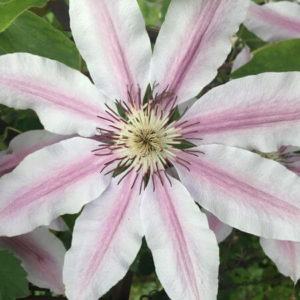 Clematis is one of the favourite climbers of many gardeners, and if plants wilt in mid-summer it’s easy to assume they need watering. In fact, clematis wilt is a fungal disease that can quickly damage stems and even kill the entire plant. Varieties with big flowers, such as the ever-popular Clematis ‘Nelly Moser,’ are more susceptible to wilt. With no chemicals available to control the problem, cut wilted stems back to healthy growth and bin (don’t compost) diseased prunings. Disinfect secateurs with a garden cleaner such as Jeyes Fluid after finishing the job too. It’ll help to prevent the disease from spreading around the garden.
Clematis is one of the favourite climbers of many gardeners, and if plants wilt in mid-summer it’s easy to assume they need watering. In fact, clematis wilt is a fungal disease that can quickly damage stems and even kill the entire plant. Varieties with big flowers, such as the ever-popular Clematis ‘Nelly Moser,’ are more susceptible to wilt. With no chemicals available to control the problem, cut wilted stems back to healthy growth and bin (don’t compost) diseased prunings. Disinfect secateurs with a garden cleaner such as Jeyes Fluid after finishing the job too. It’ll help to prevent the disease from spreading around the garden.
2. ‘Stop’ tall tomatoes
When cordon (single-stemmed) tomato plants hit greenhouse roofs, or reach the top of canes if grown outdoors, it’s time to ‘stop’ them by nipping out the tops. Regularly pinch-out side shoots, too, as tomato plants need to put all their energy into cropping rather than producing unwanted foliage. Feed weekly with a high potash fertiliser which will encourage more flowers and fruits. For tomatoes in greenhouses, it’s important to water daily (twice a day in hot weather). If the compost dries out or watering is erratic, swelling fruit can split or develop problems such as blossom end rot.
3. Beware of cabbage whites
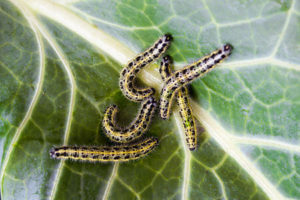 Butterflies going about their business in the garden are a sight to behold – apart from the cabbage white! If this butterfly is spotted on the wing above brassicas such as Brussels sprouts, cabbage and broccoli, take immediate action. Adult butterflies lay their eggs on brassica leaves (or under them) and the resulting caterpillars are highly destructive, rapidly devouring brassicas and covering plants with excrement. For maximum deterrent, net brassicas to prevent butterflies laying their eggs – but check plants thoroughly and squash any eggs already laid on leaves before pegging netting to the ground.
Butterflies going about their business in the garden are a sight to behold – apart from the cabbage white! If this butterfly is spotted on the wing above brassicas such as Brussels sprouts, cabbage and broccoli, take immediate action. Adult butterflies lay their eggs on brassica leaves (or under them) and the resulting caterpillars are highly destructive, rapidly devouring brassicas and covering plants with excrement. For maximum deterrent, net brassicas to prevent butterflies laying their eggs – but check plants thoroughly and squash any eggs already laid on leaves before pegging netting to the ground.
4. Rejuvenate iris
If iris clumps have died out in the middle, now is the perfect time to dig them up and divide, as plants should have finished flowering. Use a garden fork to gently ease clumps out of the ground, taking care not to damage rhizomes, then pull clumps apart. Discard the oldest bits (usually in the middle) and divide young material with leaves (you’ll find the healthiest bits at the edge of clumps). Cut leaves down by half, then plant a few new divisions in the gap left by the original plant. Plant rhizomes horizontally with only the roots and lower half buried, as the top half of each rhizome needs to be exposed to the sun for future flowering.
5. Prepare holiday irrigation
Heading off on holiday this July? Simple steps can help to keep the garden alive while you’re away. Move container plants into a shady corner, stand pots in deep saucers and water well. Flowers and edibles in hot greenhouses won’t survive for more than a couple of days though, so consider installing a drip irrigation system. These clever gadgets use solar power to channel water from a nearby water butt, via pipes and ‘drippers’, into compost. Most irrigation systems allow you to set the frequency and duration of daily watering.
6. Propagate strawberry runners
Strawberry plants often produce ‘runners’ – long shoots containing young plants. To bulk-up your stock of plants, fill pots with multipurpose compost and set pots into the soil close to the parent plant. Guide the runner into the pot and gently peg the young plant down with a piece of wire. Water well. Once plants have taken root and started to grow, the runner can be cut from the parent plant and discarded.
7. Give lawns a boost
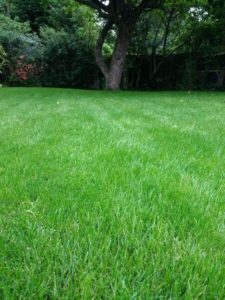 By high summer, lawns can lack vigour and lose their lush green colour, even if the grass was fed in spring. There are lots of quick-fix high nitrogen fertilisers on the market that promise rapid greening – perfect if you’re planning a barbecue or summer party. Read the instructions carefully to see if you need to leave a gap between mowing the grass and applying the fertiliser. For best results, most summer lawn feeds should be applied when the lawn is dry but rain is forecast. Don’t apply lawn fertiliser during periods of drought.
By high summer, lawns can lack vigour and lose their lush green colour, even if the grass was fed in spring. There are lots of quick-fix high nitrogen fertilisers on the market that promise rapid greening – perfect if you’re planning a barbecue or summer party. Read the instructions carefully to see if you need to leave a gap between mowing the grass and applying the fertiliser. For best results, most summer lawn feeds should be applied when the lawn is dry but rain is forecast. Don’t apply lawn fertiliser during periods of drought.
8. Harvest courgettes
Gluts of veg can cause a storage nightmare, so cut courgettes when they’re 10-12cm (4-5in) long. Regular picking of young courgettes extends the cropping period and avoids an autumn glut of marrows. While you’re on the veg patch, harvest radish, spring onions, runner beans, French beans and garlic. Check fruit bushes too, and pick raspberries, blackcurrants and gooseberries.
9. Protect container plants
During warm, wet weather, slugs are at their most destructive and container plants can be shredded. Applying self-adhesive copper tape – a popular slug repellent – reduces the risk of slug damage for minimal effort and cost. Cut the copper tape so it’s long enough to stretch around your pot, then stick it in position – ideally just under the rim of the container. If determined snails breach the copper tape, use crushed eggshells or snail barrier granules to create a physical obstacle on the surface of compost around susceptible plants in pots.
10. Keep coleus colourful
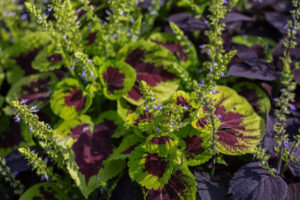 Coleus are one of the few bedding plants that are grown for their brightly coloured foliage and not their flowers. In fact, their blue flower spikes are unattractive and insignificant. Left to bloom, coleus will run out of steam long before summer is over. So regularly pinch out flower spikes, ideally before flowers emerge, and displays will carry on until the first frosts of autumn.
Coleus are one of the few bedding plants that are grown for their brightly coloured foliage and not their flowers. In fact, their blue flower spikes are unattractive and insignificant. Left to bloom, coleus will run out of steam long before summer is over. So regularly pinch out flower spikes, ideally before flowers emerge, and displays will carry on until the first frosts of autumn.
However, you will definitely want to enjoy the tall, glamorous flower spikes of lupins and delphiniums. Once they’ve finished blooming, spent stems can look a mess, so cut them off promptly. You may even be rewarded with a second flush of flowers.
What else do you love about your garden in July? What other gardening jobs for July are on your to-do list? Let us know in the comments.



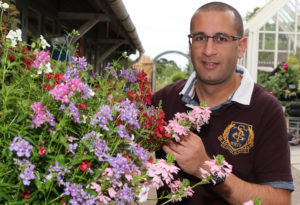 Marc Rosenberg is a freelance garden writer and editor. A former journalist with Amateur Gardening and Horticulture Week magazines, he holds seven Garden Media Guild Awards. Marc has written for publications including The Garden magazine, BBC Gardeners’ World and RHS online.
Marc Rosenberg is a freelance garden writer and editor. A former journalist with Amateur Gardening and Horticulture Week magazines, he holds seven Garden Media Guild Awards. Marc has written for publications including The Garden magazine, BBC Gardeners’ World and RHS online.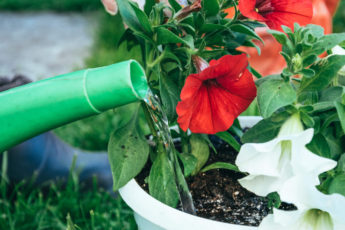
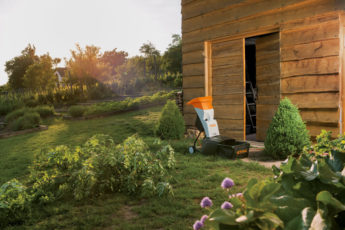










Leave a Comment